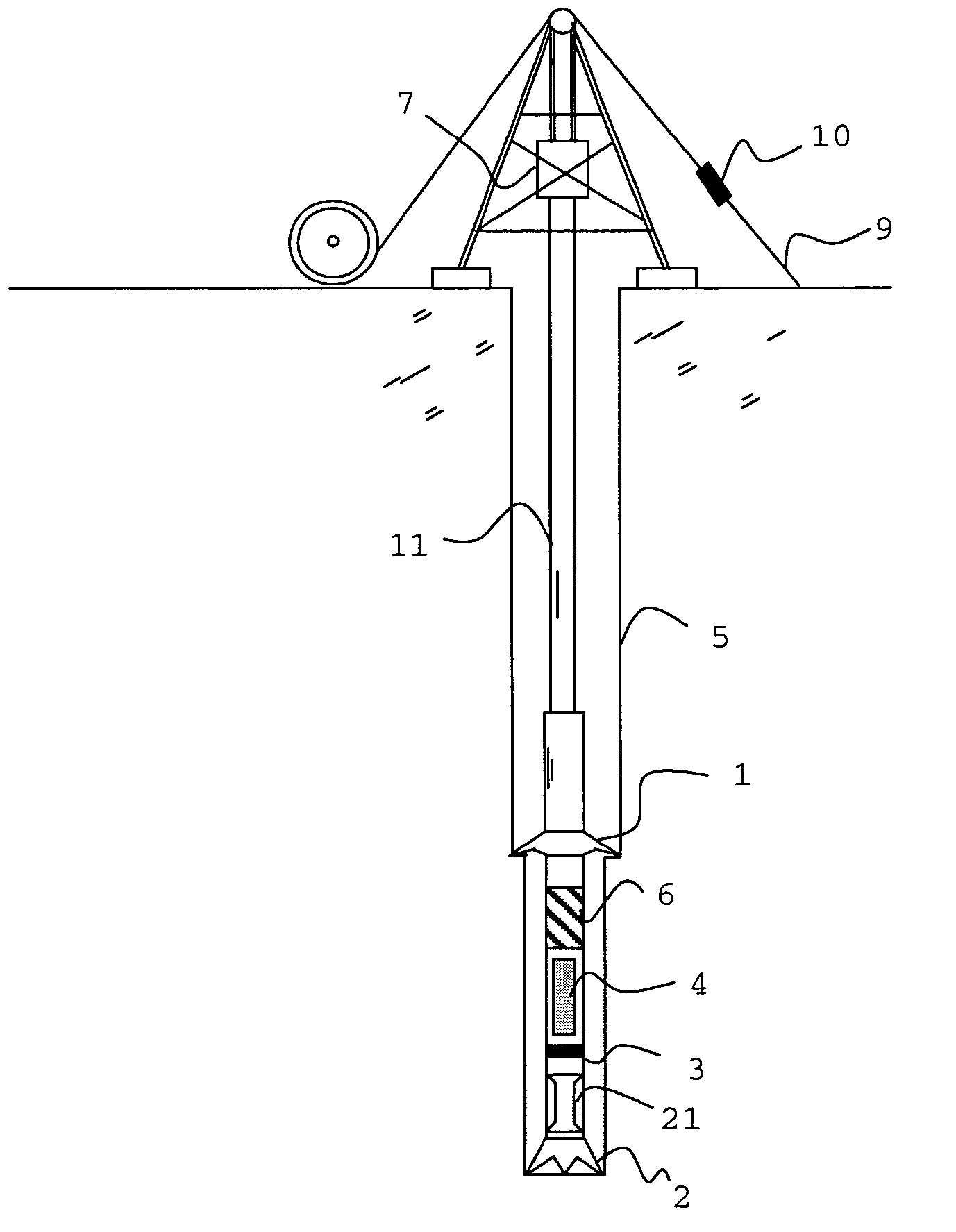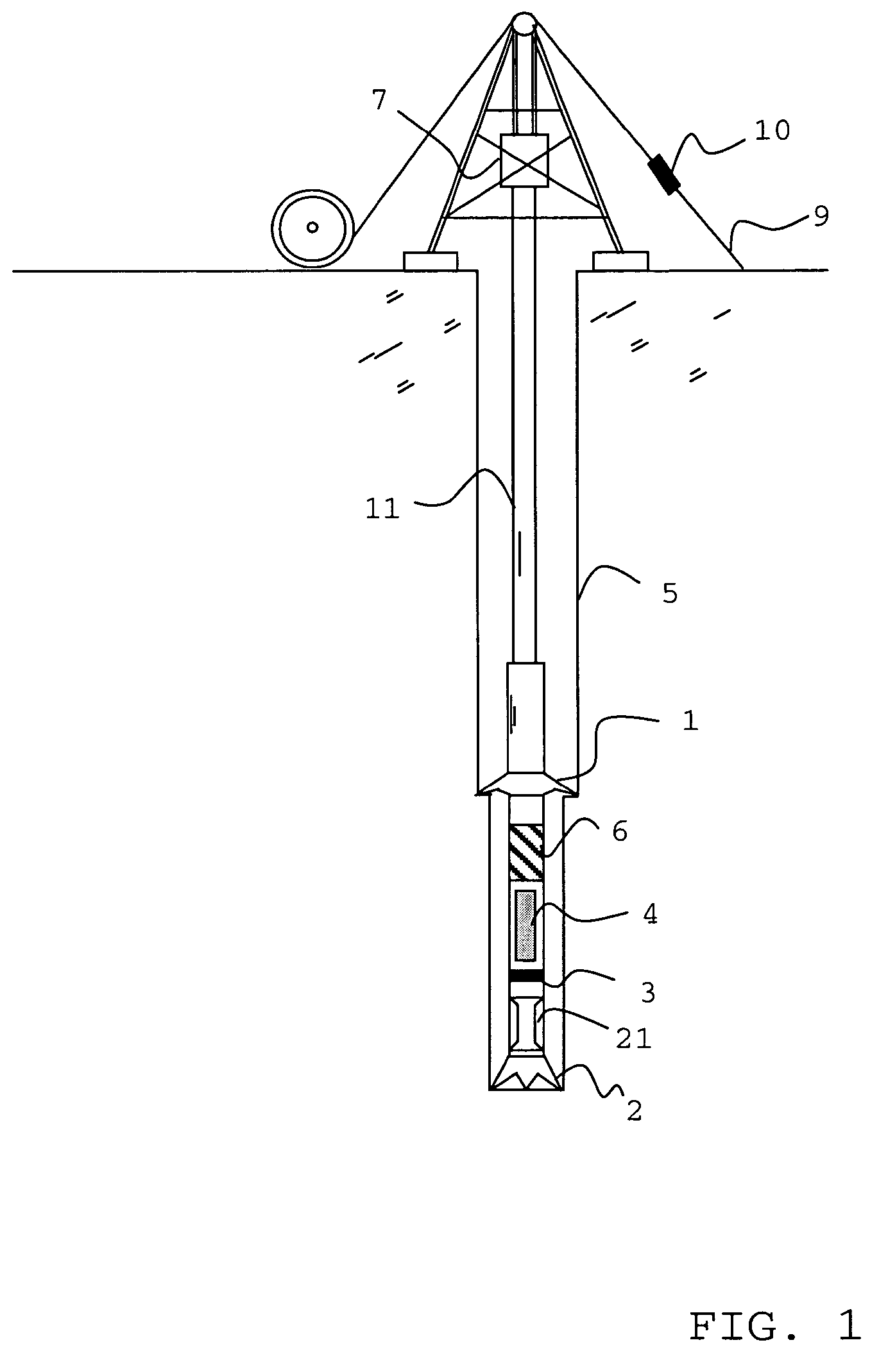Bottom hole assembly
a technology for assembly and bottom holes, applied in the direction of borehole/well accessories, surveying, drilling pipes, etc., can solve the problems of premature wear and damage of cutters, excessive weight applied to under-reamers, and undesirable bore diameter reductions, etc., to achieve better weight control
- Summary
- Abstract
- Description
- Claims
- Application Information
AI Technical Summary
Benefits of technology
Problems solved by technology
Method used
Image
Examples
example bha
[0062]FIG. 1 shows schematically an apparatus for drilling a bore hole 5. A drill string 11 penetrates the bore hole and terminates at the surface at the top drive 7 of a drilling rig. At the down-hole end of the drillstring, a BHA includes a drill bit 2 and an under-reamer 1 for drilling and enlarging the borehole. The under-reamer has a first diameter when tripping but unfolds to the nominal drilling diameter when in operation.
[0063]A compliant element 6 linking the drill bit to the under-reamer allows the drill bit and under-reamer to move relative to each other in the axial direction of the BHA.
[0064]The compliant element has a stroke length which defines the maximum and minimum axial spacing that can be produced between the drill bit and the under-reamer by this movement. It is biased towards the full stroke position, but the stroke length and compliance of the compliant element are selected such that with normal weight applied to the drill bit, the compliant element is shorten...
PUM
 Login to View More
Login to View More Abstract
Description
Claims
Application Information
 Login to View More
Login to View More - R&D
- Intellectual Property
- Life Sciences
- Materials
- Tech Scout
- Unparalleled Data Quality
- Higher Quality Content
- 60% Fewer Hallucinations
Browse by: Latest US Patents, China's latest patents, Technical Efficacy Thesaurus, Application Domain, Technology Topic, Popular Technical Reports.
© 2025 PatSnap. All rights reserved.Legal|Privacy policy|Modern Slavery Act Transparency Statement|Sitemap|About US| Contact US: help@patsnap.com



